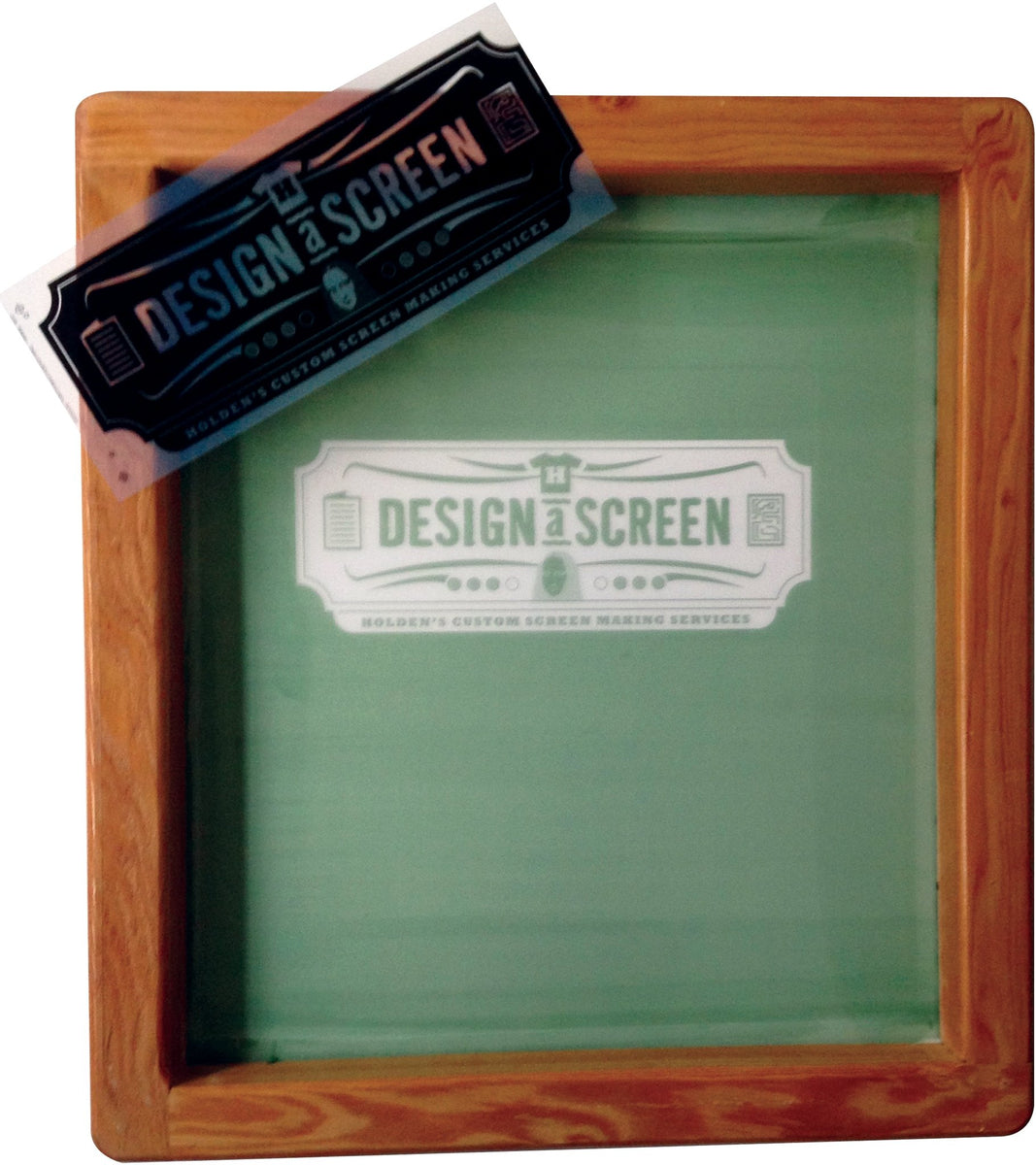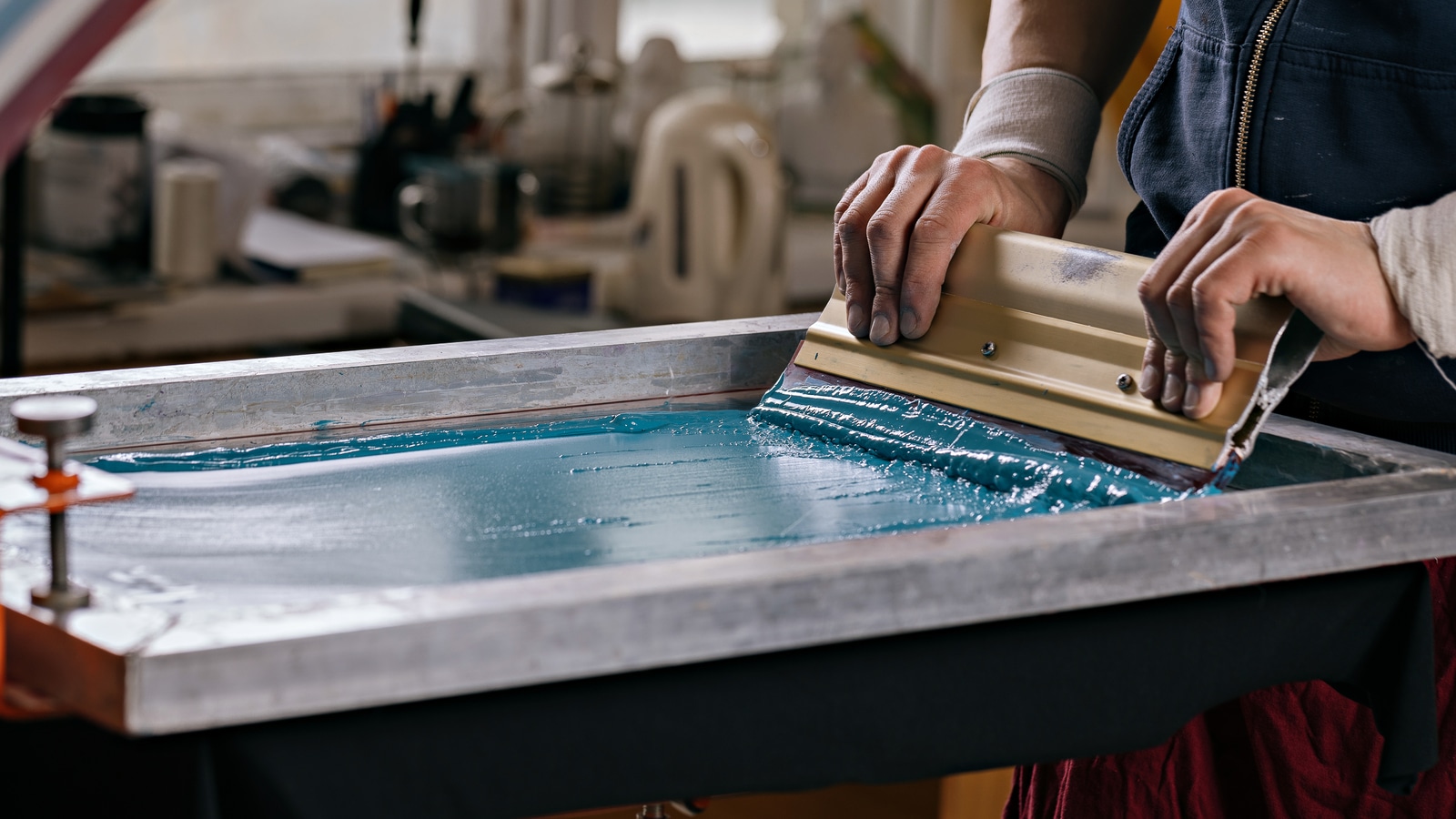Custom Screen Printing for Unique Promotional Merchandise
Custom Screen Printing for Unique Promotional Merchandise
Blog Article
Display Printing Uncovered: Everything You Required to Understand About Tee and Garment Printing Methods
If you've ever before wondered exactly how those dynamic layouts finish up on your preferred tee shirts, you're in the right place. Display printing is an interesting method that combines art with technique, using endless possibilities for creative thinking. Recognizing the basics, from equipment to ink choices, can significantly impact your results. Ready to check out the important components that make display printing an art kind? Let's discover the information that can boost your tasks.
The Fundamentals of Display Printing: Just How It Functions
When you plunge right into screen printing, you'll discover it's both a scientific research and an art. At its core, display printing involves developing a stencil, or display, that permits ink to go through just in particular areas (screen printing kit). You begin by picking your design and preparing your display with a light-sensitive solution. When you reveal this solution to light, it solidifies, leaving your design as an adverse area.
Next, you'll blend your inks and prepare your printing surface. Placement the display over the fabric, after that use a squeegee to press ink through the screen onto the garment. This procedure needs precision, as you want clear, lively prints. After printing, you'll cure the ink with heat, ensuring it abides by the textile and lasts via washes. Each step is crucial, and understanding them will certainly raise your screen printing skills, changing easy garments right into one-of-a-kind, expressive pieces.
Kinds Of Screen Printing Strategies
As soon as you understand the fundamentals of display printing, it's time to discover the various methods that can boost your designs. One popular approach is typical screen printing, where ink is pushed via a stenciled screen. This strategy is fantastic for vibrant, vivid shades. After that there's water-based ink printing, which uses a softer feel and is green, however it calls for a various strategy to treating.
An additional alternative is plastisol printing, known for its sturdiness and vibrant colors, making it a favored for lots of brands. Experiment with halftone printing to create slope impacts and elaborate designs.
Necessary Equipment for Display Printing
To attain spectacular results in display printing, having the appropriate devices is basic. You'll require a durable display printing framework, which holds the mesh that moves your design onto the garment. Next off, invest in high-quality squeegees; these are essential for applying ink uniformly across the display.
Picking the Right Inks and Products
When choosing inks and products for screen printing, you require to take into consideration the sort of ink that works ideal for your project. Think of textile compatibility to guarantee your styles look last and fantastic lengthy. Explore eco-friendly ink options to make your printing procedure extra lasting.
Kinds Of Display Inks
Picking the right screen ink is vital for attaining vibrant, durable prints that satisfy your task's demands. There are several kinds of screen inks to check out. Specialty inks, such as metal or glow-in-the-dark, can include special impacts to your layouts.

Textile Compatibility Considerations
Understanding material compatibility is important for attaining top notch screen prints, particularly since various materials respond uniquely to different inks. When selecting inks, think about the textile type-- cotton, polyester, or blends. For cotton, water-based inks function well, supplying soft qualities and breathability. Polyester, on the other hand, typically needs plastisol inks for much better adhesion and dynamic colors. If you're publishing on blends, you could need to utilize a mix of both kinds. Constantly evaluate your inks on example textile to assure they adhere effectively and keep shade honesty. In addition, bear in mind that material weight and texture can impact the last end result, so choosing the appropriate ink and product combination is crucial for your job's success.
Eco-Friendly Ink Options
Eco-friendly inks are coming to be a prominent option for display printers who intend to reduce their ecological impact while keeping high quality. When picking inks, take into consideration water-based inks, which are less unsafe and much easier to clean up compared to standard solvents. These inks bond well with textiles, supplying dynamic outcomes without toxic chemicals. You might likewise check out eco-solvent inks that make use of fewer unpredictable natural compounds (VOCs), making them a safer choice for both your health and wellness and the earth.
Furthermore, search for inks made from eco-friendly resources, such as soy or vegetable-based options. By picking the ideal inks and materials, you'll not just create magnificent layouts but also add to a more sustainable printing procedure. Make the button, and your prints will mirror your dedication to the setting!
Preparing Your Layout for Screen Printing

File Format Requirements
To assure your design looks dynamic and sharp on textile, you'll need to pay close attention to file format demands for screen printing. Beginning with vector files like AI or EPS, as they can be scaled without shedding high quality. If you make use of raster images, opt for high-resolution data, such as TIFF or PNG, preferably at 300 DPI. Stay clear of utilizing JPEGs, as they can shed clearness when resized. Also, make certain your design has a transparent background to stop unwanted white edges on your prints. Finally, maintain shade settings in mind; CMYK is typical for screen printing, so transform your RGB makes appropriately. By adhering to these guidelines, you'll set your art work up for an effective print.
Color Separation Methods
Color separation is an important action in preparing your layout for screen printing, and mastering it can significantly enhance your print quality. You'll need to break your layout into private colors, as each color requires a different display during printing. This precision not only ensures accurate shade representation however additionally enhances the printing process.
Resolution and Dimension
Achieving the finest cause display printing begins with assuring your style has the best resolution and size. Preferably, your art work needs to be at the very least 300 DPI go to this site (dots per inch) for sharp, clear prints. If you utilize lower resolution, your end product might look unprofessional and pixelated.
When it concerns size, think about the dimensions of your print area. Layout your art work to match the final print size, preferably developing it in the actual dimensions you'll be printing. This means, you'll avoid any type of unexpected scaling issues.
Always check your design in both vector and raster styles. Vector graphics can be scaled without shedding high quality, making them suitable for display printing. Preparing correctly will guarantee your design looks outstanding on every garment!
Step-by-Step Display Printing Process
Display printing is a dynamic procedure that permits you to develop lively layouts on different surface areas. To obtain begun, you'll require a screen, solution, and your picked ink. Prepare your display by cleaning it thoroughly. Next, use the solution equally and allow it dry in a dark area. Once dry, reveal your display to light with your design positioned on it, which will set the solution where the light hits, developing a stencil - screen printing kit.
After cleaning out the unexposed emulsion, your display prepares. Set it up on your printing surface area and align your garment below it. Put ink onto the screen and make use of a squeegee to push the ink via the pattern onto the fabric. Raise the display very carefully see here now and allow the print dry. Lastly, heal the ink using warmth to guarantee resilience. That's it! You've effectively screen published your layout.
Tips for Effective Screen Printing Projects
While you're diving into your display printing tasks, keep in mind that preparation is vital to success. Begin by gathering all your products-- inks, garments, displays, and mops. A tidy office helps stop undesirable errors, so tidy up prior to you begin.
Following, confirm your art work is high-resolution and properly sized for your garment. Check your display for appropriate direct exposure and tidy it completely to avoid smudges. When blending your inks, follow the producer's standards to attain the best consistency.
Throughout printing, use even pressure with your squeegee for regular outcomes. Do not rush; take your time to validate each print meets your criteria. After printing, allow your garments dry totally prior to managing or packaging them.
Last but not least, always keep a sample of your help future reference. In this manner, you can evaluate your development and boost your strategies over time. Pleased printing!

Regularly Asked Inquiries
How Long Does It Take to Set up a Display Printing Work?
Establishing a screen printing job generally takes about half an hour to an hour. You'll prepare the screens, mix inks, and readjust the press. The time differs based on intricacy and experience, so stay organized!
Can I Publish on Different Textile Keys In Utilizing the Exact Same Technique?
Yes, you can publish on various fabric kinds utilizing the very same method, however you'll require to readjust your setups and inks. Some textiles soak up ink differently, so experimenting warranties the very best results for every material.
What Are Typical Errors to Avoid in Display Printing?
When display printing, stay clear of usual errors like using the incorrect ink, ignoring appropriate direct exposure times, or missing pre-press checks. Constantly check your configuration and keep tidy screens to guarantee high quality results each time.
How Can I Effectively Clean and Maintain My Screen Printing Tools?
To correctly clean and preserve your screen printing equipment, you must on a regular basis wash screens with appropriate solvents, examine squeegees for wear, and ensure all tools are saved dust-free and dry. Consistency protects against pricey repairs and improves efficiency.
Is Screen Printing Eco-friendly Contrasted to Various Other Techniques?
Screen printing can be a lot more eco-friendly than other techniques, specifically if you make use of eco-conscious products and water-based inks. By selecting sustainable materials and techniques, you decrease waste and decrease your effect on the earth.
Display Printing Uncovered: Everything You Required to Know Regarding T-Shirt and Garment Printing Methods
At its core, display printing includes producing a stencil, or screen, that permits ink to pass through just in details areas. Setting the display over the fabric, then make use of a squeegee to press ink with the display onto the garment. One prominent method is standard screen printing, where ink is pressed via a stenciled display.When choosing inks and materials for display printing, you require to take right into account the kind of ink that works best for your project.
Report this page